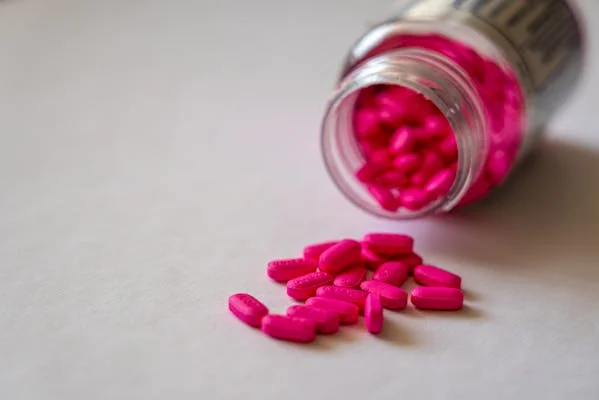What is Lorphenadine?
Lorphenadine is a type of antihistamine medication primarily used to relieve allergy symptoms such as sneezing, itching, and runny nose. It belongs to a class of drugs known as H1-antihistamines, which work by blocking the effects of histamine—a chemical released by the immune system during an allergic reaction. Unlike some older antihistamines, lorphenadine is known for causing less drowsiness, making it more suitable for daytime use.
Lorphenadine at a Glance:
- Medication Type: Antihistamine
- Primary Use: Allergy relief
- Common Side Effects: Drowsiness, dry mouth, nausea
- Prescription Required: In some regions
How Lorphenadine Works
Lorphenadine works by blocking the H1 receptors in the body, which reduces the effects of histamine. When allergens like pollen, dust, or pet dander enter the body, the immune system releases histamine as a defense mechanism. This leads to common allergy symptoms like itching, sneezing, and watery eyes. Lorphenadine helps prevent histamine from binding to these receptors, thereby reducing the intensity and frequency of allergy symptoms.
Common Uses of Lorphenadine
Lorphenadine is commonly used to relieve symptoms associated with various types of allergies. Here’s a closer look at the conditions it treats:
1. Seasonal Allergies
Often referred to as “hay fever,” seasonal allergies can lead to symptoms such as itchy eyes, runny nose, and sneezing. Lorphenadine is effective in controlling these symptoms, especially during high-pollen seasons.
2. Perennial Allergies
Perennial allergies occur year-round and are triggered by allergens like dust mites, mold, and pet dander. Lorphenadine is helpful in providing relief from these persistent allergens.
3. Skin Reactions
Lorphenadine is sometimes prescribed for allergic skin reactions, including hives and rashes caused by an allergic response.
4. Insect Bites and Stings
It can also be used for mild to moderate reactions to insect bites and stings, where it helps reduce swelling and itching.
Dosage and Administration of Lorphenadine
Lorphenadine is typically available in tablet, capsule, and liquid forms. Dosage will vary based on age, medical condition, and specific allergy symptoms.
- Adults: Generally, adults are prescribed 10 mg once daily.
- Children (2-12 years): Doses vary, and a healthcare provider should determine the exact dosage.
It’s essential to follow the prescribed dosage to avoid overuse, which can increase the risk of side effects.
Tips for Taking Lorphenadine:
- Take with a full glass of water.
- If using the liquid form, measure with a medical dosing device for accuracy.
- Avoid taking more than the recommended daily dose.
Potential Benefits of Lorphenadine
Lorphenadine’s primary benefit is effective allergy relief with reduced drowsiness. Here are some notable advantages:
- Daytime-Friendly: Due to its non-drowsy formula, lorphenadine is ideal for daytime use, allowing individuals to maintain alertness.
- Quick Relief: Generally starts working within an hour, providing quick relief from symptoms.
- Long-Lasting: One dose typically lasts 24 hours, which helps with continuous symptom control.
Possible Side Effects of Lorphenadine
While lorphenadine is generally safe when taken as directed, side effects can occur. Here’s a list of common and rare side effects:
Common Side Effects
- Drowsiness: Though it is classified as non-drowsy, some individuals may still experience mild drowsiness.
- Dry Mouth: This is a common effect with antihistamines. Drinking water may help alleviate this.
- Headache: Headaches are a mild but possible side effect.
- Nausea: Some people report feeling slightly nauseous.
Rare Side Effects
- Fast or Irregular Heartbeat
- Vision Changes
- Severe Dizziness
If you experience any of these rare side effects, it’s essential to seek medical attention promptly.
Interactions and Precautions
Lorphenadine can interact with certain other medications and substances, which may increase side effects or reduce effectiveness. Here are some important points to consider:
- Avoid Alcohol: Alcohol can amplify drowsiness.
- Consult with Doctor if Taking Sedatives: Lorphenadine may interact with sedatives or sleep aids, increasing drowsiness.
- Inform Healthcare Providers of Other Medications: Especially important for prescription medications.
Who Should Avoid Lorphenadine?
Lorphenadine is generally safe for most people, but certain individuals should avoid it or use it under strict medical guidance:
- Pregnant or Breastfeeding Women: Only use if advised by a healthcare provider.
- Individuals with Severe Liver Conditions: Liver impairment can affect how lorphenadin is processed.
- Those with a History of Allergies to Antihistamines: Consult a doctor to discuss alternative treatments.
Storage and Handling
To maintain lorphenadine’s effectiveness, store it in a cool, dry place away from direct sunlight. Here are some additional storage tips:
- Temperature: Room temperature (20-25°C) is ideal.
- Keep Away from Children: Store in a safe, out-of-reach location to prevent accidental ingestion.
- Check Expiration Date: Expired medications can lose potency and may not be safe to consume.
Comparing Lorphenadine to Other Antihistamines
Lorphenadin is often compared to other antihistamines like cetirizine and loratadine. Here’s a quick comparison to help you choose the best option for your needs:
| Feature | Lorphenadine | Cetirizine | Loratadine |
|---|---|---|---|
| Drowsiness | Low | Moderate | Low |
| Onset of Relief | 1 Hour | 30 Minutes | 1-3 Hours |
| Duration | 24 Hours | 24 Hours | 24 Hours |
| Best For | General Allergy | Seasonal & Skin Allergies | Seasonal Allergies |
Conclusion
Lorphenadin is an effective and convenient antihistamine for allergy relief with fewer side effects than traditional antihistamines. Whether you suffer from seasonal or year-round allergies, lorphenadin provides a good option for symptom management without significantly impacting daily activities. However, always consult a healthcare provider to determine the right dosage and to ensure it’s safe with any other medications you may be taking. Proper use of lorphenadin can make managing allergy symptoms easier, allowing.
Frequently Asked Questions (FAQs)
1. Can I take lorphenadine daily?
Yes, lorphenadin is generally safe for daily use, but it’s important to follow the prescribed dosage.
2. Does lorphenadine make you sleepy?
While less likely to cause drowsiness, some people may still experience mild sleepiness.
3. Can lorphenadine treat skin rashes?
Yes, it is effective in managing mild to moderate skin allergies, including rashes.
4. What should I avoid while taking lorphenadine?
Avoid alcohol and inform your doctor if you’re using any sedatives, as these can interact with lorphena dine.
5. Can children take lorphena dine?
Yes, but the dosage for children differs, and it’s best to follow a doctor’s instructions.
6. Is lorphena dine available over-the-counter?
Availability varies by country; in some regions, a prescription may be required.





